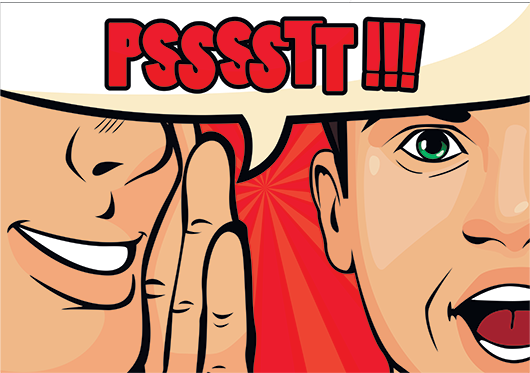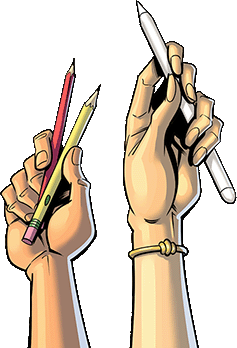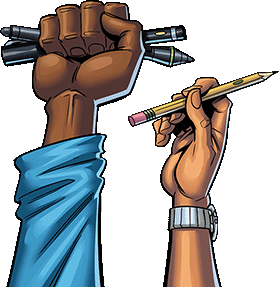Which Comic Shape is the Best Fit for Your Project?
March 11, 2021
When you are thinking about putting a comic book together, you need to consider your book’s shape. Specific projects may work better with different shapes; you can orient your comic book as a portrait, oversized, classically shaped, landscape, or square.
To assess which comic book shape is best for your project, you need to look at your panels. The number of landscapes spreads, bleeds, and critical plot points in the comic book all determine what shape will best fit your project.
Types of Comic Book Shapes
Comic book panels originally ran in newspapers, with three or four panels per comic. At a certain point, publishers began to collect readers’ favorite comics in compilations, and the nascent issues of a comic book were born.
Europe has a long tradition of comic books, with Hervé’s Tintin and Asterix and Obelix maintaining steady readership for most of the 20th century. In America, Superman and the modern idea of a comic book were created in 1938 with Action Comics #1.
If you don’t want to use a traditionally shaped comic book at 6⅝” by 10¼”, you can choose from various shapes, like oversized, portrait, or mini. Here are some of the best reasons to choose these shapes for your comic book.
Portrait
This size reflects a book that is taller than it is wide (traditionally shaped comic books fall into this category). Whether it’s 6”x 9” or 8.5” by 11”, both these books are portrait-shaped.
Oversized
Any comic book bigger than 8.5” by 11” is considered an oversized comic book. If your comic book script has many double spreads – drawings that stretch across two pages – or vast-angle landscapes, you may want to consider an oversized comic book shape that helps enhance the images’ integrity.
Landscape
To create a comic book with a landscape shape, you need a book that’s wider than it is long to accommodate the wide-angle images best suited to this format. A book 9” wide and 6” high is determined to be a landscape comic book, as is one that’s 11” by 8.5” high.
Mini
Aptly named, mini-comic books are tinier than the traditional 6” by 9”. Box sets are often formatted as mini-comic books to be packaged and sold together. If detailed artwork is essential for your creative dreams, you should probably avoid this comic book shape.
Square
A lesser-used format is a square comic book shape. When a comic book has equal height and width, it is shaped like a square, which provides a beautiful symmetry to your artwork. This comic book shape is a balanced perspective that works for some types of plots.
When you look at it, the comic book shape you choose largely depends on the panels you include in your comic book. You want the panels to be well-balanced on the page, and specific key plot points deserve centre stage, so the way a comic book is shaped affects how the readers’ eyes move through the story.

Panel and Plot Points Influence Comic Book Shape
The number and types of panels that make up your comic strips affect what shape you choose. If you have tons of spreads, a landscape format may suit your comic best. If your plot includes old-fashioned elements, consider using a square format to enhance the effect.
You may have to take a step back and look at your comic book’s narrative flow to locate the high points and low points in your story. Put your most pivotal moments at the top of the right-hand pages so that they will be most impactful.
Panel-to-Panel Transitions Affect Comic Book Shape
In a comic book, the comic panels’ size, shape, and arrangement relay the story. You want readers to experience these panels as sequential art, not as a series of disconnected drawings.
Six different transitions are featured in graphic novels: subject, aspect, moment, action, scene, and non sequitur. Here’s some more about these exciting ways you can move from panel to panel.
- Subject-to-subject: Moving subject-subject in a comic book strip is best described by an illustration of a conversation where you switch from talker to talker as the conversation progresses.
- Aspect-to-aspect: This is a great transition series for wide-angle setting shots. Picking different aspects of the scene, show it from different angles to give your reader a sense of the 360˚ perspective.
- Moment-to-moment: With measured time progression, this transition follows a person or thing as it moves through a set of circumstances with short time jumps between panels.
- Action-to-action: More time elapses over the course of an action-to-action sequence, as the panel follows the subject through a series of actions.
- Scene-to-scene: This type of transition has the most considerable scope out of all six as each panel jumps from one scene to a completely different setting with new characters. Use colors to describe these long-distance changes to help make the break clear and distinct.
- Non sequitur: A surrealist leap in logic, a non sequitur type of transition goes from one place to an unrelated site and scenario. These are the rarest in narrative arcs as they can be jarring to readers.
Vary some of these different transitions to keep an even tone to your panels. You can also use blurred motion to combine some actions, like if a character uproots and throws a tree, this can all take place in one image, using blurring to connote action.
As you keep an eye on the different types of transitions in your comic book, observe how balanced each page of your comic is.
Progression Makes a Difference
Not only does your whole story need to flow consistently, but each page should also have a logical, measured balance to it. Look at the flow of panels and make sure the timing still matches the plot movement.
If you feel like your eyes leap over the panels too quickly, you can insert pauses. The gutters, which is the negative space between the panels, help the readers’ eyes move from panel to panel systematically and logically. Pay attention to the gutters to make sure you’re not making them too wide or too narrow.
Gutters are the silent partner to your panels, and you should wield them with equal emphasis. You can incorporate pauses into your storyline by widening gutters and using some panels with no text, either speech bubbles or exposition, as pauses for your reader to catch up on the action.
The Take-home Message
At Comix Well Spring, our printing staff provides practical know-how, and our customer service is unsurpassed. For your new print projects, our expert printing staff can guide you through the technical process so you can concentrate on creative decisions, like comic book shape.


